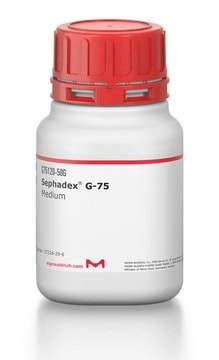Kluczowe dokumenty
45235
Eosin Y disodium salt
suitable for electrophoresis
Synonim(y):
2′,4′,5′,7′-Tetrabromofluorescein disodium salt, Acid Red 87, Bromo acid J. TS, XL, or XX, Bromofluorescein, Bronze Bromo ES, D&C;Red No. 22, Eosin yellowish
About This Item
Polecane produkty
metody
electrophoresis: suitable
rozpuszczalność
H2O: 0.1 g/mL, dark red
fluorescencja
λex 520 nm; λem 540 nm in H2O
przydatność
in accordance for electrophoresis test
ciąg SMILES
[Na+].[Na+].[O-]C(=O)c1ccccc1C2=C3C=C(Br)C(=O)C(Br)=C3Oc4c(Br)c([O-])c(Br)cc24
InChI
1S/C20H8Br4O5.2Na/c21-11-5-9-13(7-3-1-2-4-8(7)20(27)28)10-6-12(22)17(26)15(24)19(10)29-18(9)14(23)16(11)25;;/h1-6,25H,(H,27,28);;/q;2*+1/p-2
Klucz InChI
SEACYXSIPDVVMV-UHFFFAOYSA-L
Szukasz podobnych produktów? Odwiedź Przewodnik dotyczący porównywania produktów
Inne uwagi
Hasło ostrzegawcze
Warning
Zwroty wskazujące rodzaj zagrożenia
Zwroty wskazujące środki ostrożności
Klasyfikacja zagrożeń
Eye Irrit. 2 - Skin Sens. 1
Kod klasy składowania
11 - Combustible Solids
Klasa zagrożenia wodnego (WGK)
WGK 3
Temperatura zapłonu (°F)
376.9 °F - Pensky-Martens closed cup
Temperatura zapłonu (°C)
191.6 °C - Pensky-Martens closed cup
Środki ochrony indywidualnej
dust mask type N95 (US), Eyeshields, Gloves
Wybierz jedną z najnowszych wersji:
Certyfikaty analizy (CoA)
Nie widzisz odpowiedniej wersji?
Jeśli potrzebujesz konkretnej wersji, możesz wyszukać konkretny certyfikat według numeru partii lub serii.
Masz już ten produkt?
Dokumenty związane z niedawno zakupionymi produktami zostały zamieszczone w Bibliotece dokumentów.
Nasz zespół naukowców ma doświadczenie we wszystkich obszarach badań, w tym w naukach przyrodniczych, materiałoznawstwie, syntezie chemicznej, chromatografii, analityce i wielu innych dziedzinach.
Skontaktuj się z zespołem ds. pomocy technicznej





